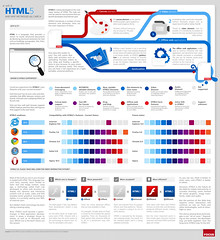THE Web is poised for a comeback.
How’s that? Isn’t the Web already the crucial utility of online commerce, information and entertainment? In many ways, it certainly is. The Web’s importance is indisputable — but there are signs that it is slipping. Investment, innovation and energy have been shifting elsewhere in computing — mainly, to shopping, gaming and news applications for smartphones and tablet computers.
These applications often tap into Web sites for information on all manner of things. But they do not reside on the open Web, and cannot be searched and linked to one another in the same way Web applications can. Think of the apps tailored for Apple’s iPhones and iPads, or those made for Google’s Android operating system. Social networking sites like Facebook and Twitter have similar characteristics, as walled gardens that are connected to the open Web but are separate from it.
This is the trend that Wired magazine described last September, under an intentionally exaggerated headline: “The Web Is Dead.”
And Tim Berners-Lee, the Web’s creator, issued a warning in the December issue of Scientific American. “The Web as we know it,” he wrote, “is being threatened.” The danger, he added, is that “the Web could be broken into fragmented islands.”
But the Web’s fortunes may soon brighten remarkably. The scenario relies on a collection of technologies, already years in development, that is starting to make its way into the mainstream of computing. HTML5 is the geeky umbrella term for this assemblage. (It’s the fifth generation of HyperText Markup Language, which is the way Web pages are written in code.) Engineers say the technology will make it possible to write Web applications, accessed with a browser, that are as visually rich and lively as the so-called native applications that are now designed to run on a specific device, like an iPad or an Android-based tablet.
The Web browsing software that is needed to bring HTML5 to life has recently arrived. Last week, Mozilla, the maker of Firefox, released the newest version of its browser, showing off its support for the new technology. A week earlier, Microsoft brought out its new Internet Explorer tuned to run HTML5. The Safari brower from Apple, meanwhile, also supports the new technology, and the company has particularly embraced HTML5’s video-playing feature as an alternative to Adobe’s Flash player. And the Chrome browser team from Google has long been a leader in HTML5 development.
The technology, by all accounts, is an innovative achievement. HTML5 represents the “next big step in the progress of the Web,” says Jeffrey Jaffe, chief executive of the World Wide Web Consortium, which guides the development of technical standards. Paul Mercer, a veteran Silicon Valley software designer, says the technology will make it possible to “achieve the dream of expressive, interactive applications on the Web that are Cupertino-class,” a reference to the headquarters of Apple, where Mr. Mercer worked for years.
There are also potentially sweeping business implications, executives and investors say. The technology could alter the playing field in the emerging market for digital media and mobile applications, creating new market opportunities.
“Right now, we’re in a native apps world,” says John Lilly, a venture partner at Greylock Partners, a venture capital firm in Silicon Valley. “But people are underestimating the power of the Web. I think we’re going to see an explosion of Web-based apps over the next couple of years.”









